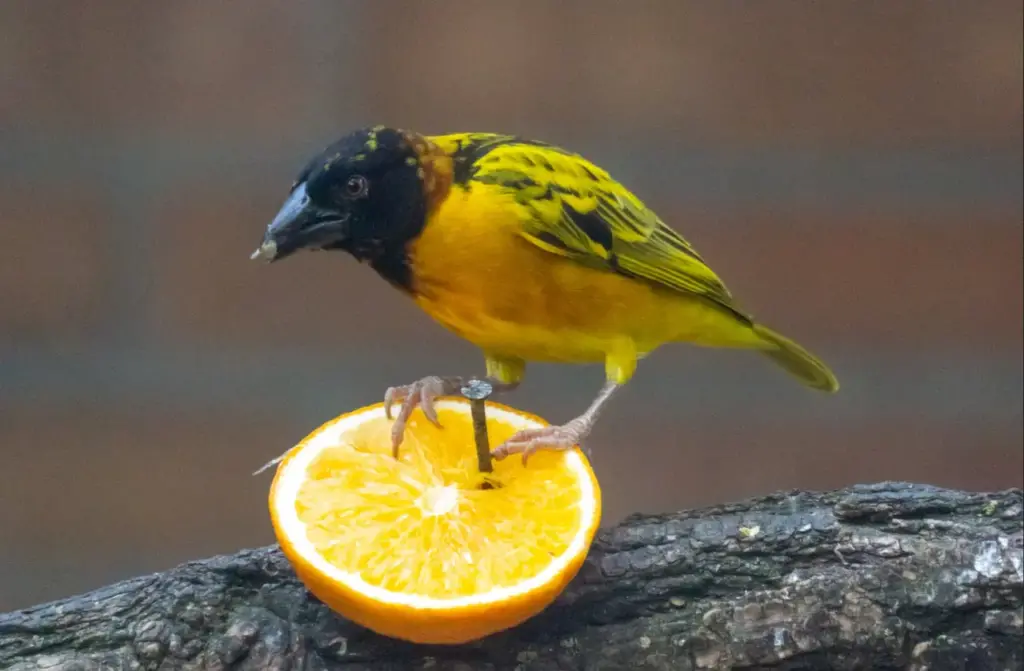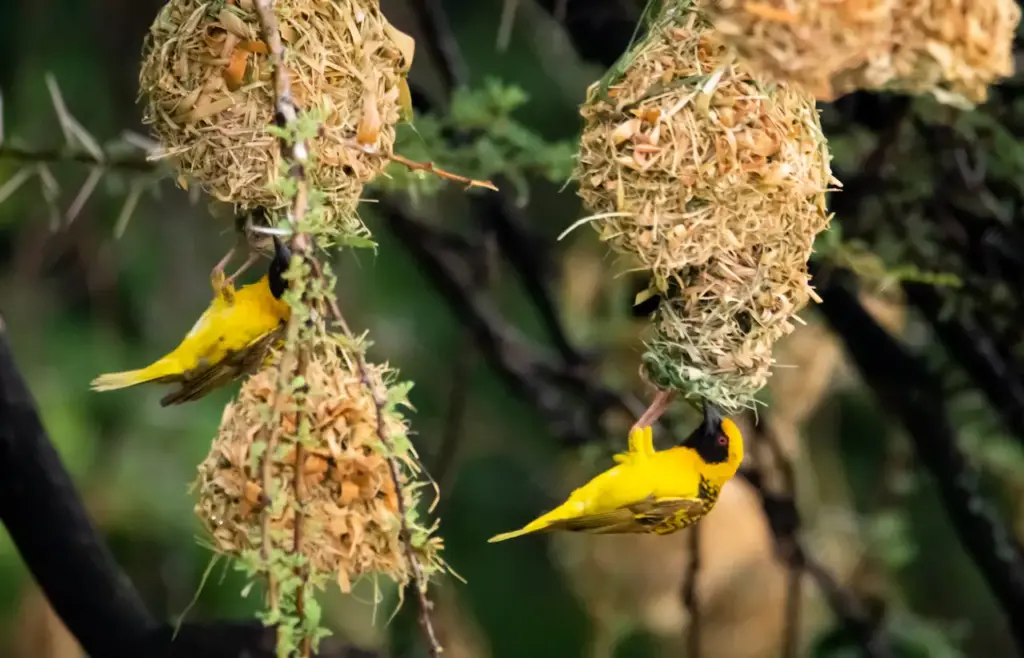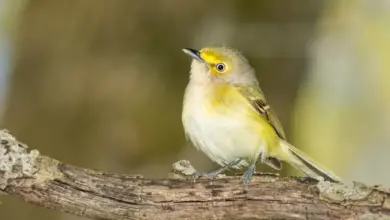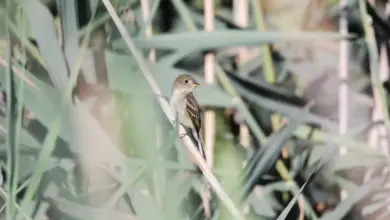The Village Weavers (Ploceus cucullatus) – also known as the Spotted-backed Weaver or Black-headed Weaver – are endemic to sub-Saharan Africa, where they are found from Mauritania to Ethiopia south to southern Africa. In this range, it is common from Zimbabwe and Mozambique to the eastern half of South Africa. Localized populations live in northern Botswana and north-eastern Namibia.

They generally prefer open or semi-open habitats, woodland or forest along rivers, and thornvelds, particularly near water. They have also established themselves in towns and villages, where they inhabit parks and gardens.
They have been introduced to islands in the Caribbean (i.e. Hispaniola), and the Indian Ocean (i.e. Mauritius and Réunion); where they are considered agricultural pests and a threat to native bird species in Haiti and Mauritius.
Escapees from the bird trade have recently been sighted in the wild in North and South America and Europe.
These are large, noisy, gregarious birds that are typically found in large colonies.
Description:
The Village Weaver measures about 6 – 7 inches (15-17cm) in length (including its tail). It has a strong conical bill.
The breeding male has a black head and bill and chestnut nape. The upper plumage and wings are yellow and black, and the under plumage is yellow.
The non-breeding male has a yellow head with an olive crown, grey upper plumage, and whitish under plumage. The wings remain yellow and black.
The adult female has streaked olive upper plumage, yellow and black wings, and pale yellow under plumage.
Juveniles look like females but are browner on the back.

Breeding / Nesting:
The breeding season usually stretches from September through October and from January through February.
Village or Spotted Back Weavers are territorial colonial nesters, with colonies of about 10-300 breeding males. Males will mate with up to 5 females (average 2) per breeding season.
The males are responsible for building the nests, which are never used more than once. Each male builds 3 to 5 nests and it takes him about 9 to 14 hours to complete one. Nests are typically attached to the thin branches of free-standing trees.
The nest is usually woven from green strips of reeds, grass leaves or palm blades and once completed is a kidney-shaped structure with a large entrance on the underside.
After completing the nests, the male will defend his small territory around his nests, displaying to the females, and attracting their attention to his nests. If the female accepts, he will add a short entrance tunnel, while the female lines the interior with soft grass heads and feathers. The female usually lays between 2-5 eggs, which are incubated only by the female for about 12 days. The male assists in feeding the chicks. The young fledge the nest when they are about 17 to 21 days old.
Village Weavers can raise several broods per season
Diet / Feeding:
Village Weavers mostly eat insects, such as Coleoptera (beetles) m termite alates, ants, and locusts (Orthoptera), gleaning them from the ground and foliage and catching termite alates in mid-air (“hawking”). The percentage of insects in their diet increases during the breeding season, especially when feeding young.
They also feed on nectar, from plants such as Aloe barberae (Eastern tree aloe), Aloe ferox (Bitter aloe), Erythrina caffra (Coast coral tree), Erythrina latissima (Broad-leaved coral tree) and Schotia (boer-beans).
Village Weaver also feed on seeds and grain, and in some areas are considered crop pests. They will also utilize human offerings, readily accepting picnic table scraps.

Call / Vocalization:
The calls of this bird include harsh buzzes and chattering.
Predators and parasites
Village Weavers are preyed upon by various birds of prey, such as Little Sparrowhawks, African Harrier-hawks, Gabar Goshawks; as well as Purple Herons and Pied Crows. Snakes, such as Dispholidus typus (Boomslang) and the Python sebae (African rock python) will mostly prey on their eggs and the young, but will also take adults roosting in their nests.


